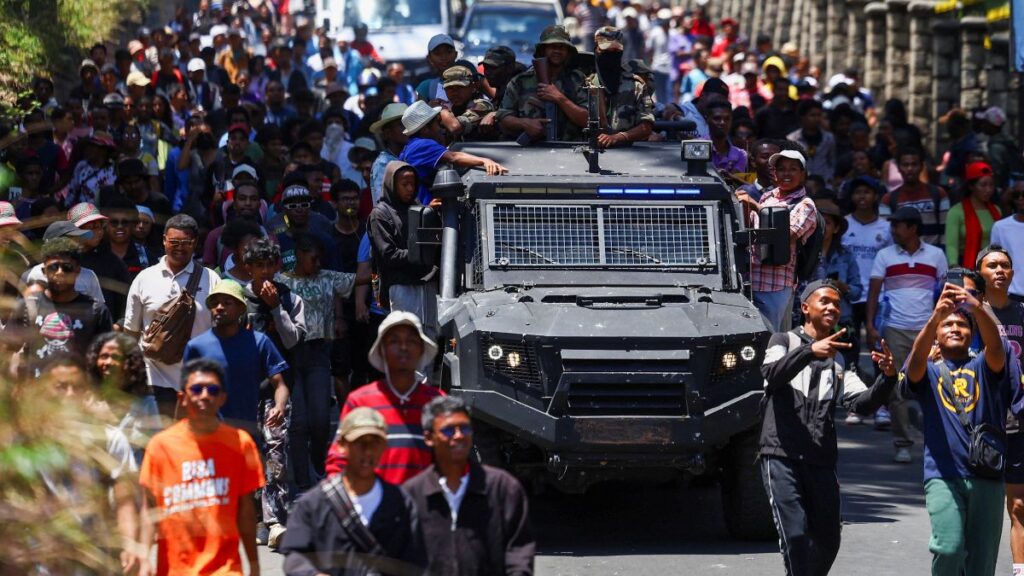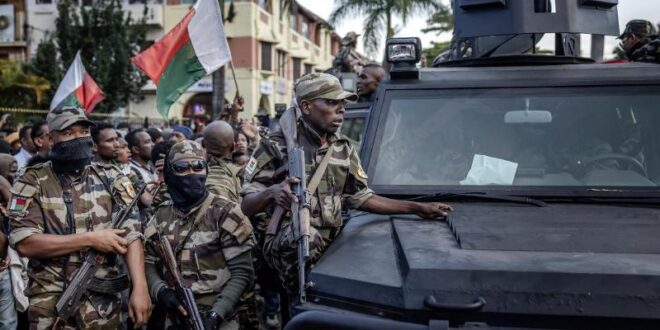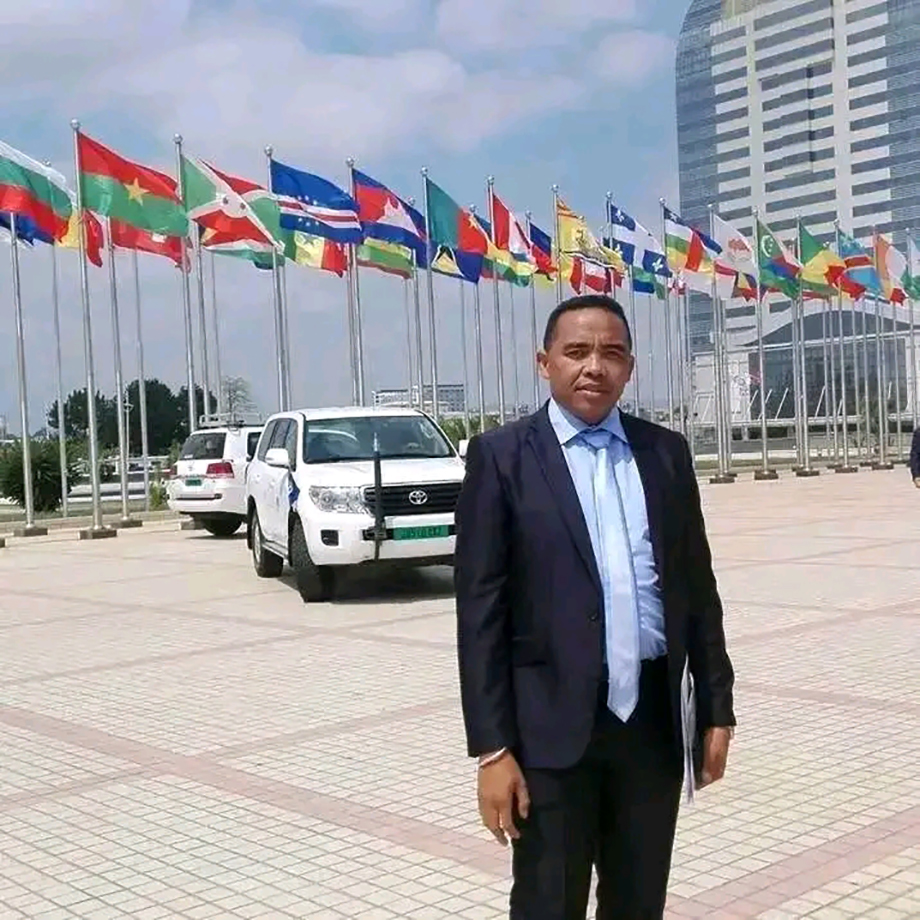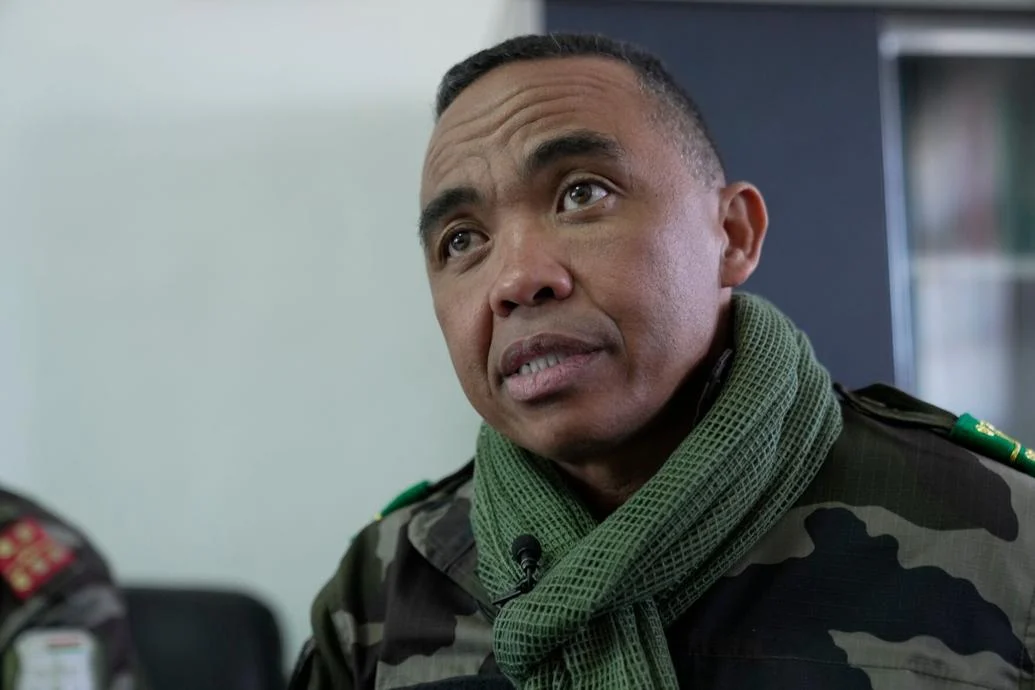- He is a Malagasy military officer. (Reuters)
- He commands the elite CAPSAT unit, which is a specialized branch of the armed forces. (Reuters)
- His previous roles include being governor of the Androy region (2016‑2018) and leading an infantry battalion in Toliara. (Reuters)
- He rose to a senior position in CAPSAT in 2022. (Reuters)
- He has at times been openly critical of President Andry Rajoelina, even arrested in 2023 for allegedly inciting a military mutiny (though that result was a suspended sentence). (Reuters)
Political, Social, & Economic Context Before the Coup

To understand how Randrianirina came to power, it’s important to see what Madagascar was going through:
- There had been weeks of large protests by youth, especially under a movement called “Gen Z Madagascar,” over water and electricity shortages, poverty, corruption, and a sense of government inaction. (AP News)
- On September 30, Rajoelina attempted to defuse tension by dissolving the government but protests expanded. (AP News)
- Clashes between protestors and security forces occurred; the United Nations put at least 22 deaths connected to the unrest. (AP News)
- The government’s legitimacy was under increasing strain, with many Madagascans disillusioned by persistent economic challenges and insufficient public services. (Al Jazeera)
The Coup & Randrianirina’s Ascendancy

Here is a timeline and the mechanics of how Randrianirina rose to power:
| Date | Key Event |
|---|---|
| Early October 2025 | Protests intensify. State response is forceful. Rajoelina dismisses the government, but tensions persist. (AP News) |
| October 11 | A turning point: Randrianirina and soldiers from CAPSAT publicly call for Rajoelina’s resignation and refuse orders to fire on protesters. This marks his break with the incumbent administration. (AP News) |
| October 13‑14 | President Rajoelina flees the country (or goes into hiding/ “safe place” citing threats to his life) amid defections and loss of control. Parliament votes to impeach him. CAPSAT takes over key institutions. Randrianirina announces that the military has taken power. (Al Jazeera) |
| October 14‑15 | Randrianirina, in coordination with CAPSAT, dissolves many state institutions except the National Assembly. He accepts an invitation from the High Constitutional Court to assume the interim presidency. A committee chaired by the military (and possibly including civilians) is set up to govern during the transition. (Reuters) |
| October 17 (planned) | The swearing‑in (“oath‑taking”) ceremony is scheduled in the High Constitutional Court, using the title “President for the Refoundation of the Republic of Madagascar.” The transitional period is set for 18 to 24 months, during which elections are promised. (euronews) |
So, in essence, Randrianirina leveraged the combination of popular protest, defections in the security forces, and institutional actions (parliamentary impeachment, support from the Constitutional Court) to legitimize his takeover.
Legitimacy, Challenges & International Reaction

Legitimacy
- Randrianirina has attempted to present the coup as a rescue mission: claiming “responsibility” to save the country from collapse. (Reuters)
- He relies on legal cover: the High Constitutional Court, which in his narrative has invited him to assume the presidency in the absence of Rajoelina. There’s ambiguity about how free or coerced that invitation was. (Africanews)
- He has promised democratic transition and elections within 18‑24 months. He also talked of forming a new government and appointing a new prime minister. (euronews)
Challenges
- Institutional dissolution: He has suspended many key institutions: Senate, High Constitutional Court, Independent Electoral Commission, High Court of Justice, etc. Only the National Assembly remains. This raises big questions about checks and balances. (Wikipedia)
- Popular expectations: The protests weren’t originally calling for a military takeover; they were demanding better services, less corruption, more inclusion. Many supporters will now expect genuine change and may feel betrayed if it’s simply a swap of elite leadership. (Le Monde.fr)
- International pressure and isolation: The African Union has suspended Madagascar from the bloc. The UN and foreign governments have condemned the unconstitutional change in power and demanded a return to civilian rule. (Reuters)
- Risk of unrest continuing: Depending on how Randrianirina manages the transition (timelines, inclusion, transparency), the protests may resume or evolve into other forms of social instability. Economic crises, corruption, infrastructure deficits remain deep. (Al Jazeera)
What It Means for Madagascar: Prospects & Scenarios
Here are possible paths forward, along with factors that will shape outcomes.
| Scenario | What needs to happen for it to succeed | Risks |
|---|---|---|
| Successful transition to civilian government | Clear roadmap for elections; institutional reform; inclusive process with representation (especially youth); crackdown on corruption; restoring trust; possible constitutional changes. | Military reluctance to hand over real power; manipulation of elections; continuity of corruption; possible backlash if change is superficial. |
| Authoritarian drift | Military retains control over politics, media, institutions even post‑elections; delayed or defective democratic reforms; prioritization of stability over freedoms. | Domestic unrest; international sanctions or isolation; economic downturn; potential internal splits in military or between elites. |
| Hybrid regime (some democratic façade, but military retains real power) | Compromise between pressures: promises of elections, perhaps limited civil liberties, but controlled by security forces and elites. | Public disillusionment; loss of legitimacy; risk of renewed protest; possible external pressure leading to instability. |
Why This Coup Matters Regionally & Historically
- Madagascar joins a list of former French colonies (Mali, Burkina Faso, Niger, etc.) that have experienced military takeovers in recent years. (scmp.com)
- It signals continuing fragility in governance in parts of Africa: weak institutions, economic grievances, youth unrest, and corruption create conditions for non‑democratic transitions.
- It tests international norms: how strong will be the response from AU, UN, foreign aid donors, and how much pressure can be brought to bear for a return to civilian rule.
Conclusion
Colonel Michael Randrianirina’s rise to power in Madagascar is the result of a confluence of factors:
- Deep public discontent—particularly among young people—over socio‑economic conditions and perceived corruption and ineffectiveness in government.
- Strategic defection of a key military elite unit (CAPSAT) led by Randrianirina, which tipped the balance.
- Legal/institutional maneuvers (parliament impeaching Rajoelina; a Constitutional Court invitation) to provide a veneer of legitimacy.
- International diplomatic pressure, but also a history of limited leverage in similar situations.
Going forward, much will depend on his leadership choices: whether he follows through with promised democratic transitions, whether reforms are substantive, whether institutions are rebuilt, and whether he can maintain order without slipping into authoritarianism. The hopes among many Madagascans are high; the risks are also substantial.


